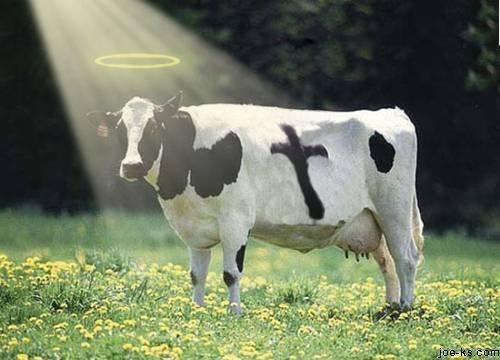"A rising global middle class means more crazy-a** consumption of bags – and more cows. Presently around 290m cows are killed every year from a global herd approaching 1bn. Projections tell us that in order to keep us in wallets, handbags and shoes, the industry needs to slaughter 430m cows annually by 2025. ("https://www.theguardian.com/fashion/2016/mar/13/is-it-time-to-give-up-leather-animal-welfare-ethical-lucy-siegle)
There are currently approximately 1.3 to 1.5 billion cows grazing, sleeping, and chewing their cud at any given time on planet Earth. And these 1,300 pound (average weight for both a beef and dairy cow) animals eat a lot. Much like humans, when they eat, gas builds up inside of their guts and has to be expelled. (See Why Beans Make You Fart) Cows fart and burp… a lot. The result is a large amount of methane being introduced into the atmosphere.
In a 2006 United Nations' Food and Agricultural Organization report, it claims that the livestock sector, most of which are cows, "generates more greenhouse gas emissions as measured in CO2 equivalent – 18 percent – than transport." According to a Danish study, the average cow produces enough methane per year to do the same greenhouse damage as four tons of carbon dioxide. So is this significantly contributing to global warming?
Why could this potentially be bad? Methane is twenty one times more potent at trapping heat from the Sun than carbon dioxide. Though it is less prevalent in the atmosphere than carbon dioxide, it is, by unit, the most destructive of the greenhouse gases. Since the turn of the 19th century, methane gas emissions have increased by 150%, according to NASA's Goddard Institute.
Methane gas, like all other greenhouse gases (which includes water vapor), acts like a blanket around our planet, trapping heat. The right amount and the planet has an average temperature of a life-supporting 59 degrees Fahrenheit. Too little and the greenhouse effect becomes weak, like on Mars. Too much and the surface of the planet becomes so hot "it can melt lead," like on Venus.
Livestock is the largest source of methane gas emissions worldwide, contributing over 28 percent of total emissions. Wetlands, leaks from oil refineries and drills, and landfills also contribute methane gas to the atmosphere. In fact, unlike the ratios on a global scale, in the United States livestock is only the third largest contributor, behind the mining and transportation of natural gas and rotting landfill waste.
In actuality it's not as much the farting that's the problem, cows' burping and manure contribute more methane gas than flatulence. According to researchers at New Zealand's largest Crown Research Institute, AGResearch, up to 95 percent of the emissions comes from the cow's mouth rather than its behind. It's estimated, through whichever orifice, that each individual cow lets out between thirty and fifty gallons of methane per day. With an estimated 1.3 to 1.5 billion cattle in the world today, this adds up fast.
Exactly how significant this it to our global environment isn't something that anyone can easily put a number on, but the EPA, NASA, various global agriculture organizations, and the United Nations all recognize that this is a real problem. In recent years, several different solutions have been proposed. Scientists and experts have experimented with cows' diets to see if that could help cut down on the amount of methane gas. For instance, Welsh scientists studied the effects of putting garlic into cows' feed. According to BBC News, "Garlic directly attacks the organisms in the gut that produce methane." So far, results have been positive.
Researchers have also studied adding plants that are high in tannins to the diet, which are believed to lower methane levels in ruminants. Another branch of study focuses on not lowering the amount of methane gas, but figuring out a way to contain it and repurpose it. Some farms have experimented with having their livestock live in a plastic bubble, which takes the expelled gas and converts it into electricity. But this process is both expensive, inefficient, and considered somewhat inhumane, forcing animals to live inside an artificial bubble.
Methane gas emitted by cows and other livestock does have a significant impact on the amount of greenhouse gases in our atmosphere, which are the main culprits behind climate change and global warming. While farts aren't the only way cows are expelling methane, it is, at least, accurate to say that cow farts play a part in our planet's climate growing hotter.
Bonus Facts:

 This post was edited by Jon at May 31, 2020 7:31 PM MDT
This post was edited by Jon at May 31, 2020 7:31 PM MDT